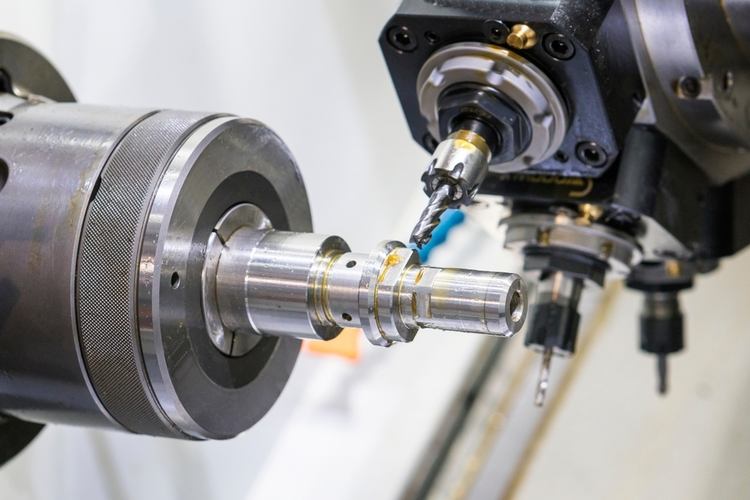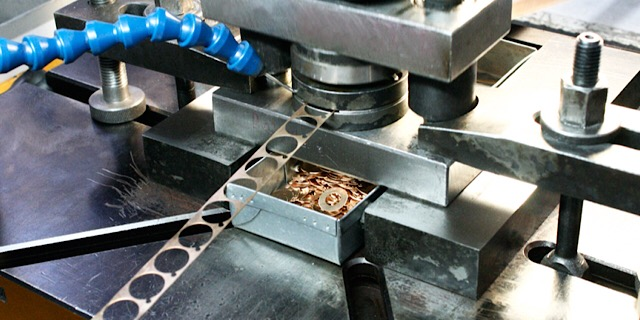
Metal stamping and forming technology is commonly used in the manufacturing of various building materials. Hydroforming, bending, drawing, cutting, stamping and welding are among the most common techniques involved.
Besides these production techniques, choosing the right metal for your project is important. The best materials are those that are easy to bend, cut, stretch and shape without cracking.
Stainless steel, aluminum, copper, brass to name a few are commonly used in this field. Each of these metals has unique features and specialized application and are also affordable and readily available.
Let’s look at the various properties and the types of metals ideal for Metal Stamping and Forming Services and a few tips on how to pick the right metals.
Choosing the right metal for your product
Here are key properties to consider when choosing the right metal for your product:
- Ductility
This refers to the measure of pliability in a metal. The material you opt for should be easy to bend or form into multiple shapes without breaking.
It also refers to how well a metal can be stretched into a wire under tensile stress. For instance, platinum and stainless steel are highly ductile meaning they can be hammered into multiple shapes and still resume their native form without distortion.
On the other hand, materials like aluminum are softer and less ductile as compared to stainless steel.
- Machinability
This refers to metals that are easy to cut with a blade. Machinable metals also support high-speed production without breaking. Likewise, the softer the metal the higher the machinability and vice versa. Stainless steel, for instance, is a hard metal meaning its machinability is low. Steel, on the other hand, has an average machinability.
- Tensile strength
The best metals have a strong integral structure meaning they don’t break easily even when subjected to extreme force. Metal stamping and forming involve punching, bending, piecing, and banking so the material you choose should be strong enough to withstand all that. Stainless steel has high tensile strength and unlike aluminum, it can handle extreme tension.
- Weld-ability
The material you choose should be easy to weld and solder. Weld-ability is the ability to join two pieces of metal together effortlessly.
Most metals and thermoplastics are weldable, but others are easier to weld than others. The measure of a material’s weld-ability is determined by the quality of its end product.
For example, steel produces finer end products than stainless steel and is also easier to weld with standard techniques and tools.
- Corrosive resistance
Some metals are naturally corrosive-resistant while others require specific chemical treatment or plating to secure them from corrosion.
Water, chemical reactions, and atmospheric oxidation are the main cause of metal corrosion. If you want your end product to be corrosive resistant, consider using materials that are renowned for their strength, ductility, and imperviable.
For example, aluminum and stainless steel are known to resist corrosion.
Types of metal for precisions metal stamping and forming
Different metals have different properties and not every metal is suitable for this operation. They also differ in the end product, quality, appearance, and prices. Before you choose a particular metal for your stamping and forming project, consider striking a balance between the price, workability, and the usage stage.
- Brass
Brass can be easily stretched and pressed into various shapes without cracking. It also features an attractive color and the end products have a nice finish.
Another good thing about this metal is that it resists corrosion from chemicals, water, organic compounds, alkaline, and neutral saline solutions.
Most people use it for the production of ornaments and other consumer items. It is also a good electric conductor and can be used in place of pure copper for various electrical applications.
- Aluminum
This metal is popularly used in the manufacturing industry because it can create strong products that are corrosion resistant. Some of these products include kitchen wares, furniture, aircraft components, window frames, and more.
It is also an excellent electrical and thermal conductor, often found on electrical cables as well as consumer electronics. Plus, it is also the most commonly used alloy in the production of sturdy parts like marine and truck frames.
Generally, if you are looking for a sturdy yet lightweight that can be easily welded then this is the metal for you.
- Copper
Copper is a superior electrical conductor often used in the production of power lines. Pure silver and gold are the only metals that can offer similar electrical conductivity as copper. This metal is also resistant to atmospheric oxidation, water acids, and other corrosives.
When Copper is exposed to atmospheric oxidation, it creates a protective oxide layer on its surface known as a patina to secure it from further corrosion. This layer enhances the aesthetic value of the metal, making it ideal for architectural use and other buyer-facing products.

- Stainless steel
Stainless steel is a combination of high-end chromium and steel. However, the level of chromium in the steel alloy must be more than 10.5% for it to be considered stainless. Likewise, this metal comes in different grades to choose from including ferritic, austenitic, and martensitic. Other desirable properties of stainless steel include durability, cost-effectiveness, corrosion resistance, good conductivity, and ductility.
- Pre-Plated Steel
This metal is a result of galvannealed or galvanized steel. Galvanizing protects the metal from corrosion and rusting while annealing reduces the metal’s hardiness by altering its structural property. when steel is heated the electrical and mechanical properties changes making it more ductile for easier fabrication. Click here to read on how you can design coated stampings too.
Conclusion
Choosing the right material that can be easily fabricated is a critical step to getting the perfect final product. While technological advancement has made metal fabrication easier, not all metals are suitable for this task. You have to create a balance between cost, weight, and strength in your choice. Is the metal ductile enough? Malleable enough? or does it have a good corrosive resistance? These are some of the questions you should ask yourself before opting for a certain metal. At the end of the day, what you want is a product that can be brought to the market faster.
Leave a Reply